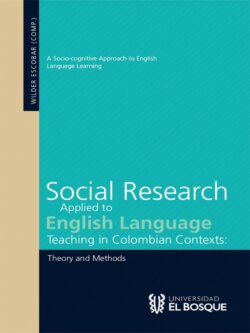Читать книгу Social research applied to english language teaching in Colombian contexts - Wilder Yesid Escobar Alméciga - Страница 11
На сайте Литреса книга снята с продажи.
Linguistic Typology and Verbs of Motion
ОглавлениеTo a native English speaker, the fabled lines “Jack fell down and broke his crown/ And Jill came tumbling after,” rarely evoke second thoughts as to the inherent structure of the English verb phrase in relation to the manner, motion, and path of movement. In fact, it undoubtedly requires minimal cognitive effort on behalf of the native English speaker to construct verb expressions of this nature as our lexicon is brimming with phrases such as falling down, tumbling after, trudging along, drifting by, and dropping in. Integral to these expressions is the element of path of motion, or trajectory, represented by an adverb or preposition and not directly encoded on the verb itself. Such a phenomenon has been the direct focus of the work of Leonard Talmy, in which he has set the guidelines for linguistic classifications within the realm of language typology. Talmy’s (2000) designation of typology separates languages into two main categories, that of satellite-framed and verb-framed languages, both of which are entirely dependent upon the conflation of manner, motion, and path in events of motion. Satellite-framed languages, including English, are defined by their reliance on satellites which are added to the verb to depict the path of motion (Larrañaga et al., 2011). “Jack fell down,” as the popular nursery rhyme suggests, requires the use of the preposition down to depict the path of Jack’s falling. In contrast, verb-framed languages, like Spanish, depict motion events in a different way, generally encoding the path of the motion directly on the verb (Spring, 2010; Ibarretxe-Antuaño, 2009). This becomes apparent in the Spanish translation of the aforementioned nursery rhyme: “Jack se cayó.” In this case, both the action of falling, as well as the movement of the figure in regards to the ground, are encoded on the verb itself. As such, these typologies as defined by Talmy (2000) make specific reference to the formation of events of motion within a particular language.
